Ground Source Heat Pump (GSHP) System
What's GSHP?
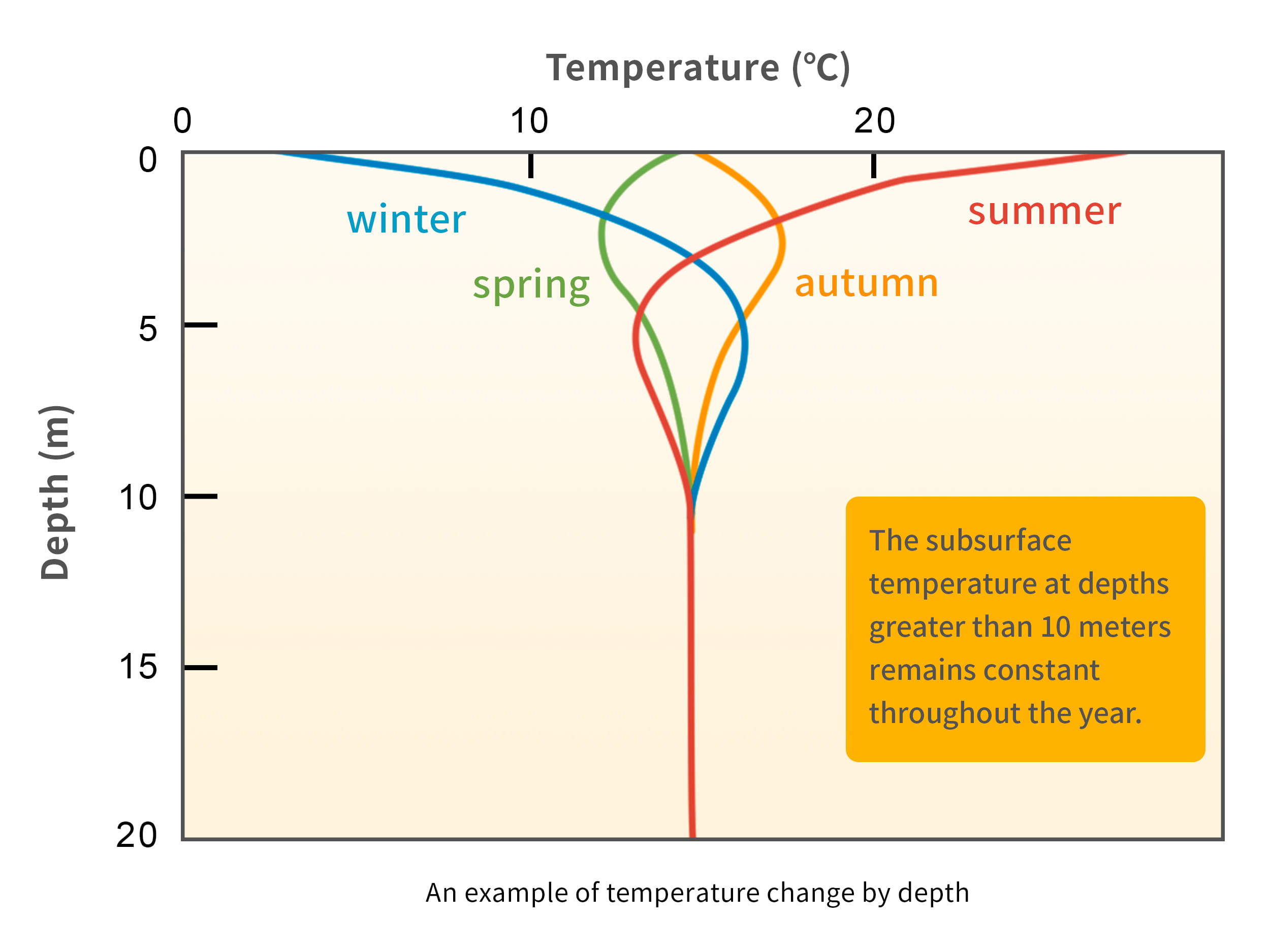
Subsurface, the temperature is almost constant regardless of season
or time of day. Unlike aboveground, it remains cool in the summer and warm in the winter.
We utilize the temperature gap between the surface and subsurface for heat source.
We use the heat source and heat pump for efficient air conditioning and snow-melting and for creating
systems that contribute to large reductions in energy use and decarbonization.
GSHP is renewable energy that exists right under our feet.
Conceptual diagram of the GSHP system
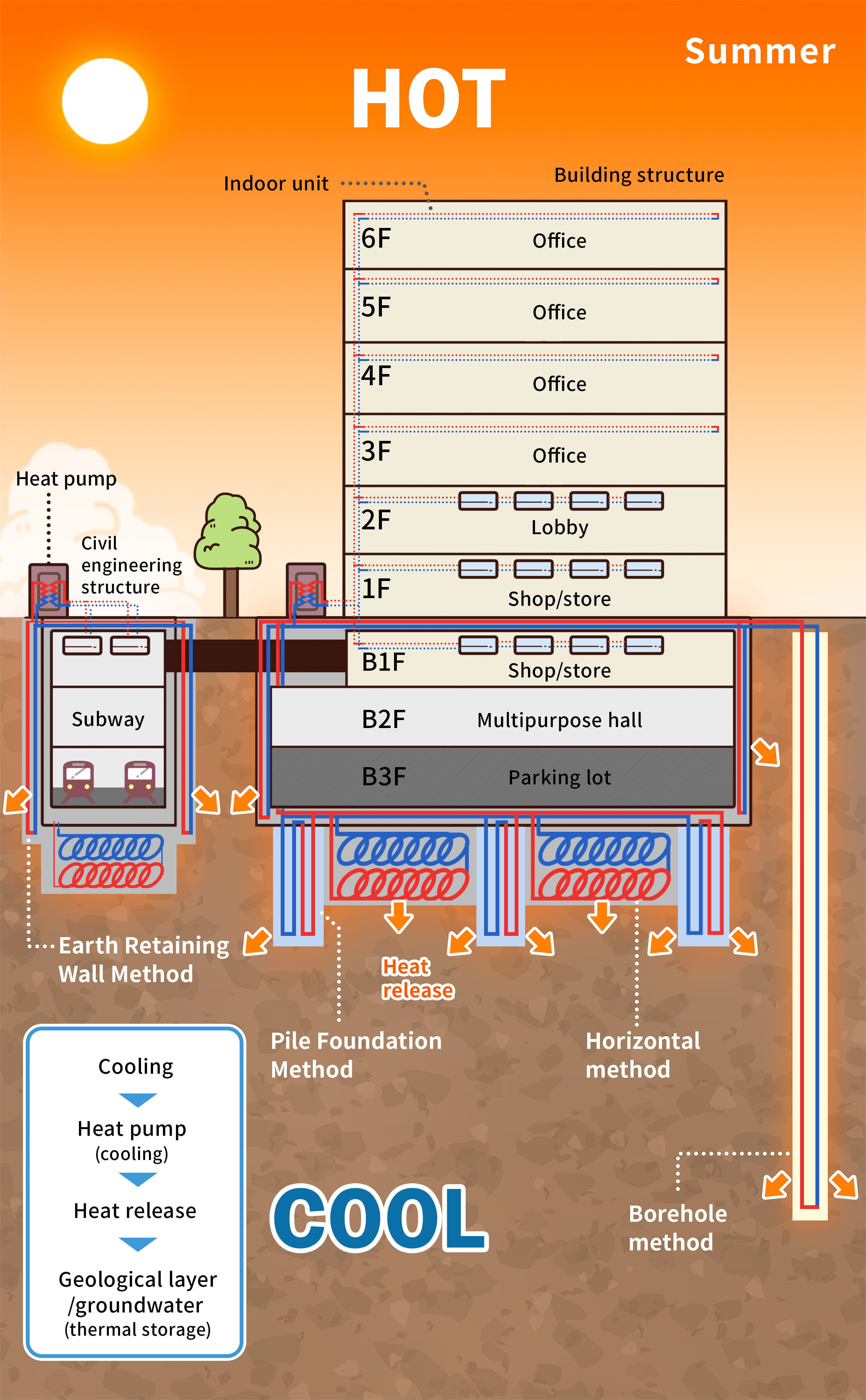
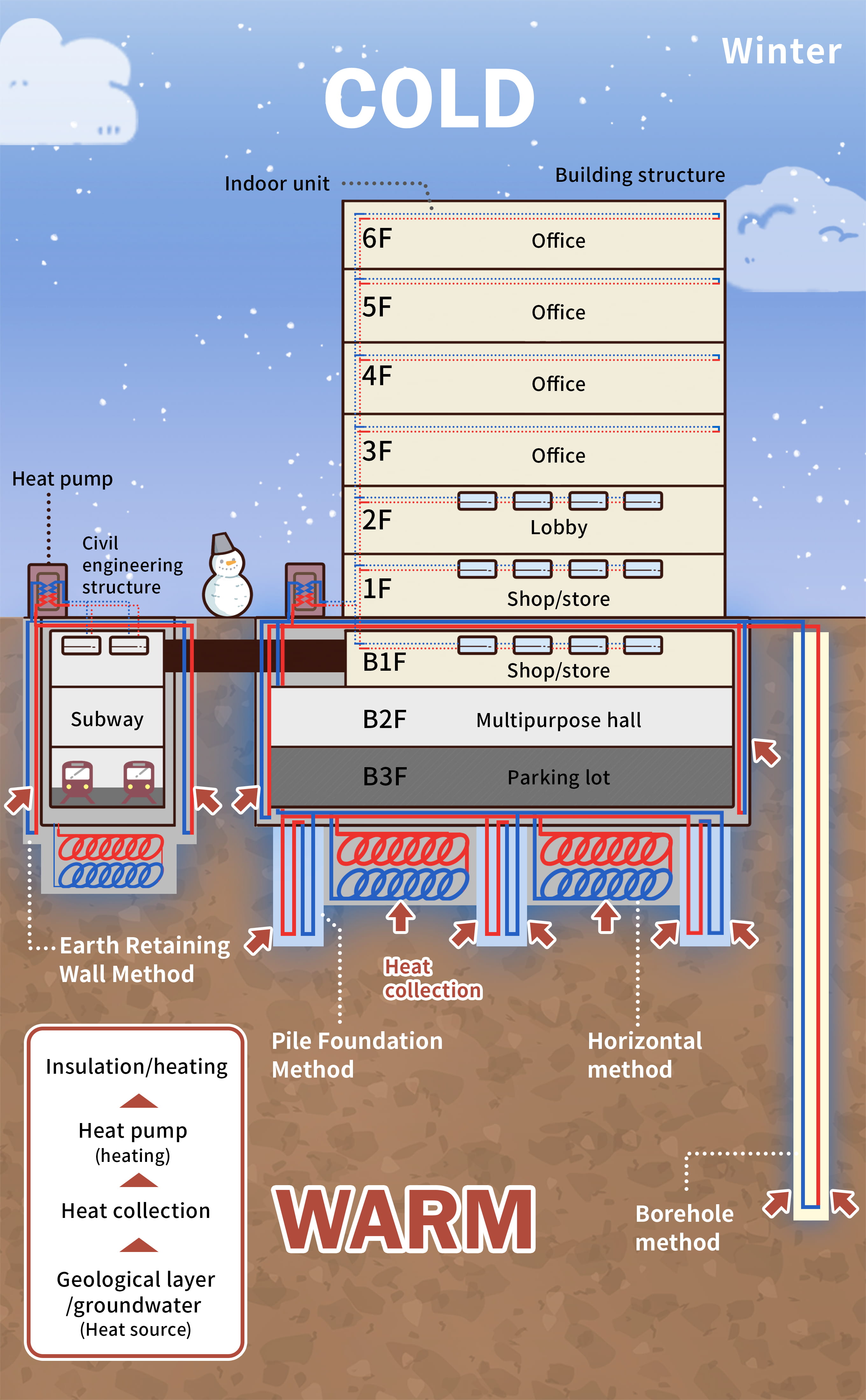
As one of the pioneers of GSHP research, development, and
practical application, we already hold significant accomplishments in the field.
We propose optimal system designs for different purposes and conditions and provide a full range of
services, including the installation of ground heat exchangers.
Using various heat exchange methods, we aim to develop geothermal energy as infrastructure and "create
cities" with GSHP systems for urban infrastructures.
Ground Heat Exchange Methods
Through much research, we demonstrated successfully various methods of developing
ground heat exchanger(GHE)s, which are the foundational parts of the GSHP system.
We propose the correct heat exchange method depending on the unique conditions.
Borehole Method
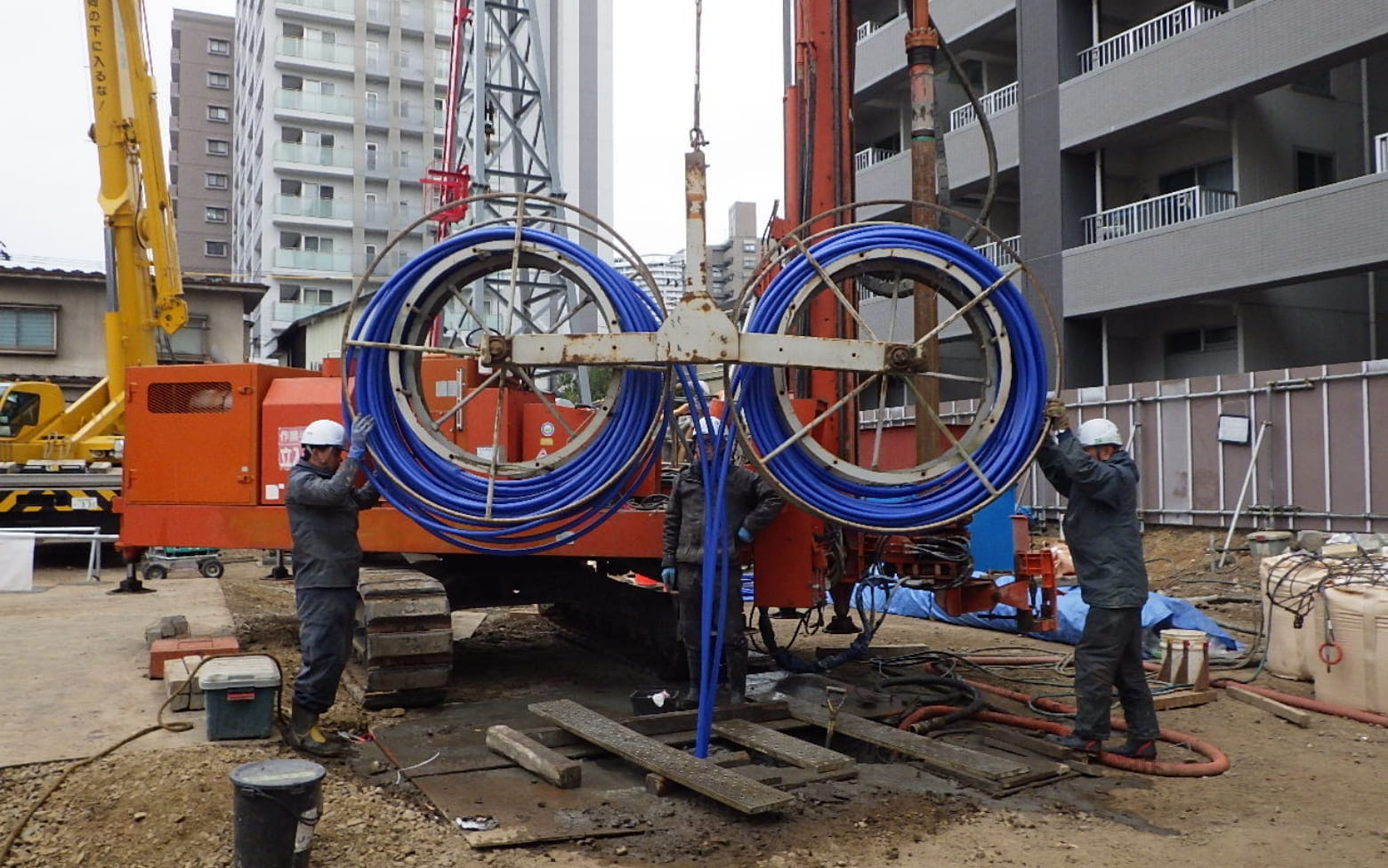
This a vertical-type method that drills about 100 m below ground
level to create a well and install GHEs. This is our most commonly used method and can
be used for existing buildings.
Since drilling works can be executed independently, high quality can be assured.
Pile Foundation Method
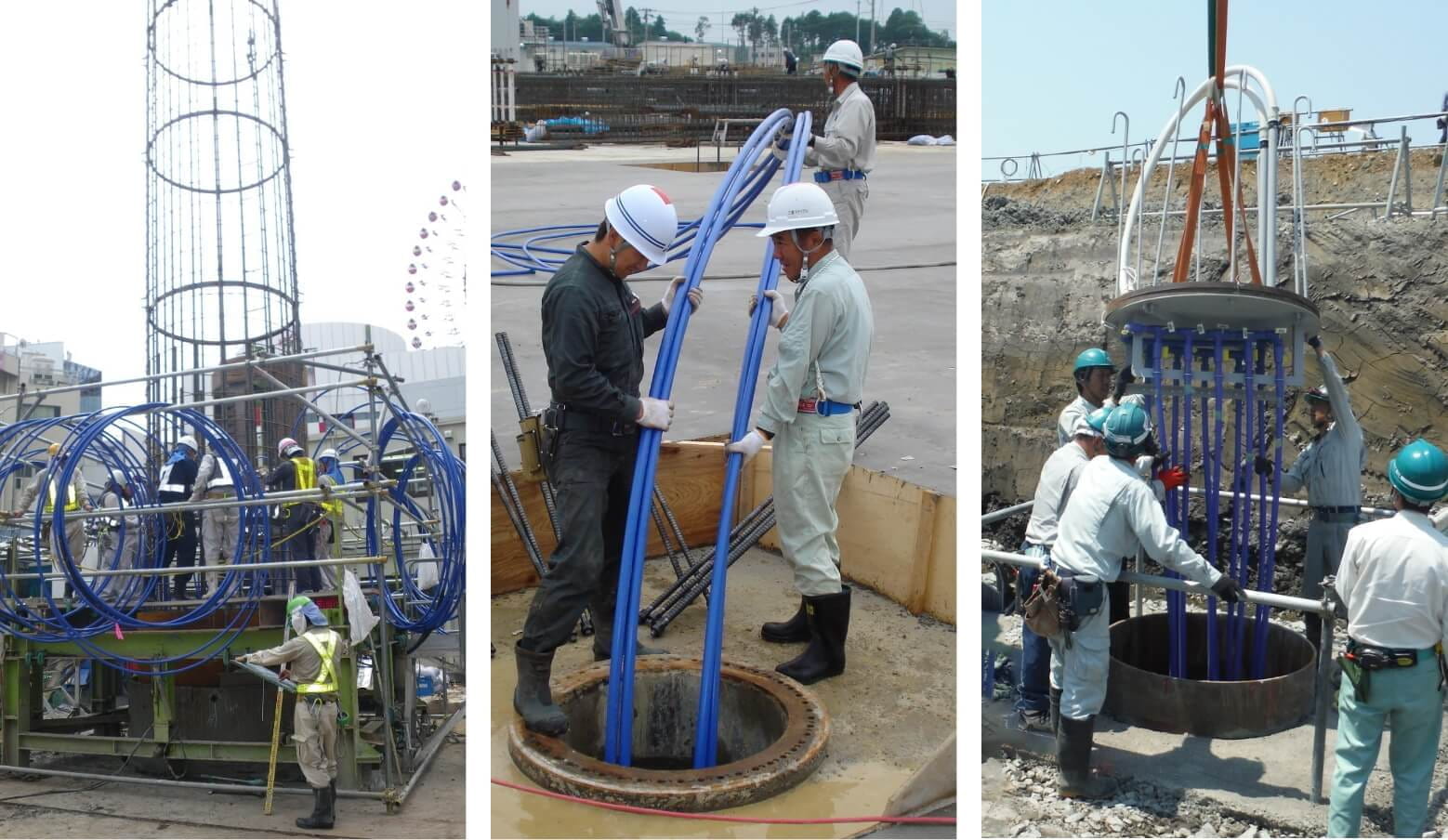
This is a vertical-type method that installs GHEs along with piles when establishing pile foundations of buildings. This method can be used with both cast-in-place piles and precast piles. Although execution must happen during construction work, there is no need to drill a new well, so cost reduction can be expected. (Patent No. 6452876)
Horizontal Method
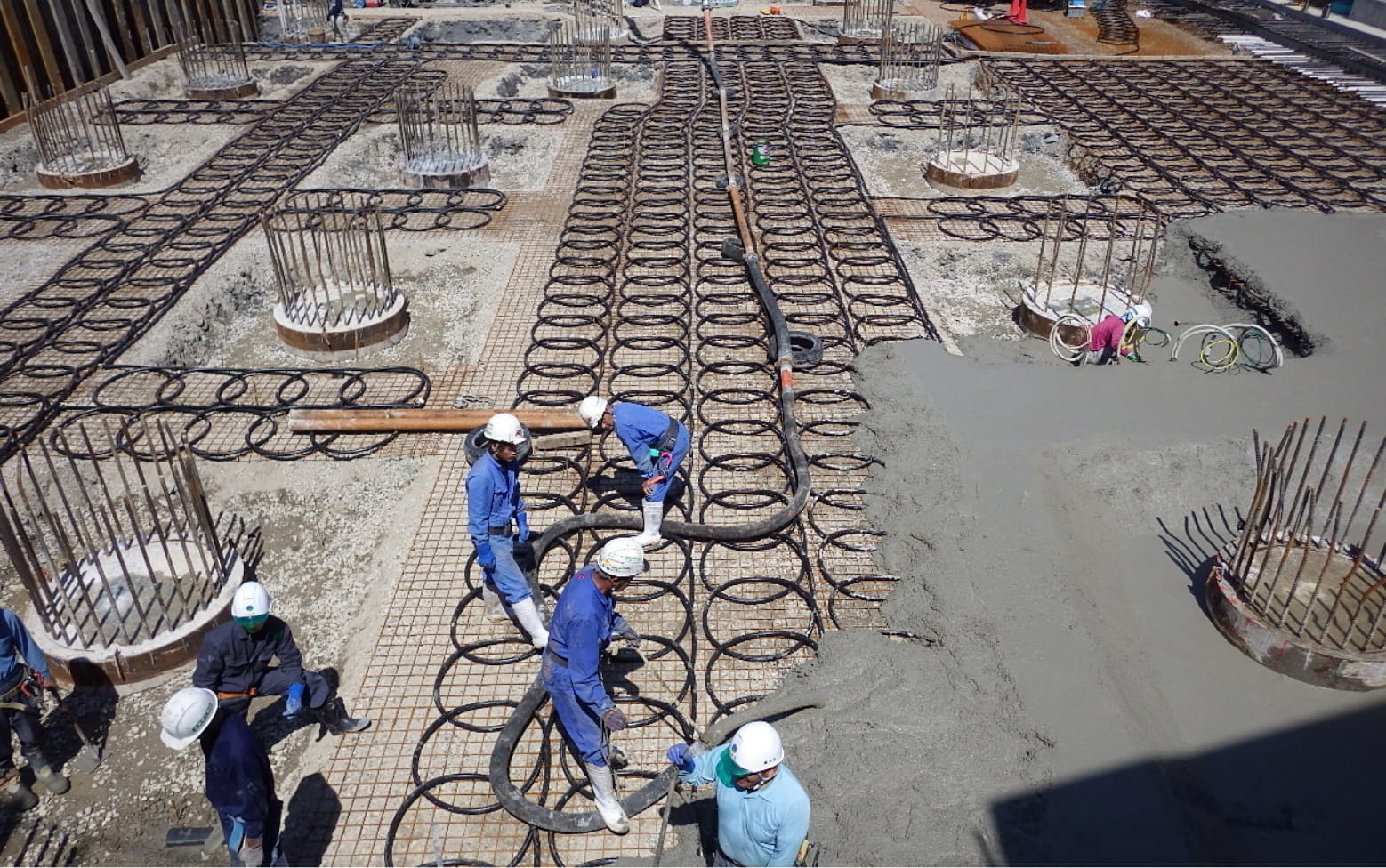
This is a method in which GHEs are installed horizontally and heat is
exchanged horizontally over the surface area. There are examples of installation at depths of up to 2 m and
in spaces under buildings.
The area beneath a building
is a great environment for heat exchange because air temperature and sunlight have less impact on the
temperature underground, which is relatively stable even in shallow areas. Installation space must be
available, but the drilling cost will be significantly reduced if paired with other construction work.
This ground heat exchange method was realized through technology development demonstration projects led by
the Ministry of the Environment. (Patent No. 5624533, No. 5859731)
Earth Retaining Wall Method
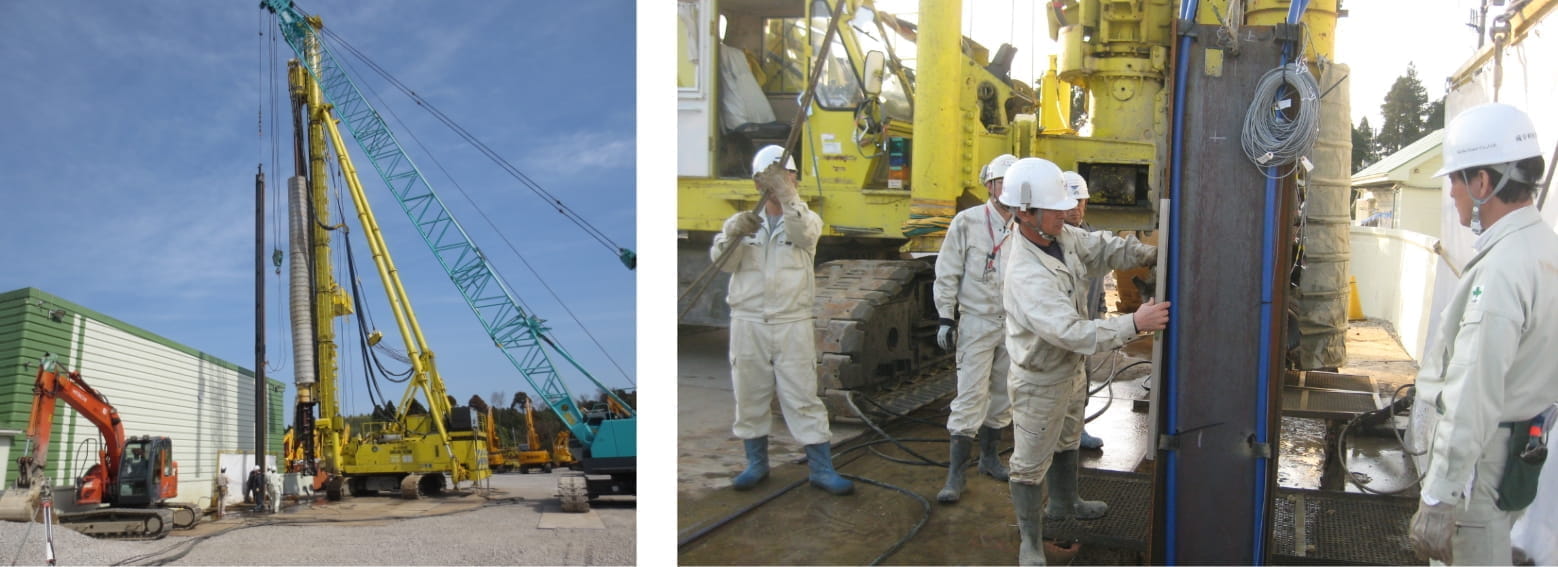
This is an method that installs GHEs in concrete diaphragm walls
built with the SMW construction method. Specifically, the GHE is pre-installed on the H-beam at ground level
and lowered inside the concrete diaphragm walls. For this reason, the area around the GHEs will be filled
with soil cement.
This is a ground heat exchange method was realized through the technology development of NEDO (New Energy
and Industrial Technology Development Organization). (Patent No.5384058)
Surveys on Geothermal Energy in shallow ground
For economically optimal design, we conduct a "Thermal Response Test (TRT)" to
estimate subsurface thermal property values (mainly the effective thermal conductivity of geological layers:
the value including the effect of groundwater heat transfer). After then, we simulate the subsurface
temperature
based on the data collected through the TRT, and design the optimal system for the area of
installation.
Our test equipment is certified TRT equipment and is able to obtain the data required for
procedures determining compliance with energy conservation standards under the Building Energy Efficiency
Act.
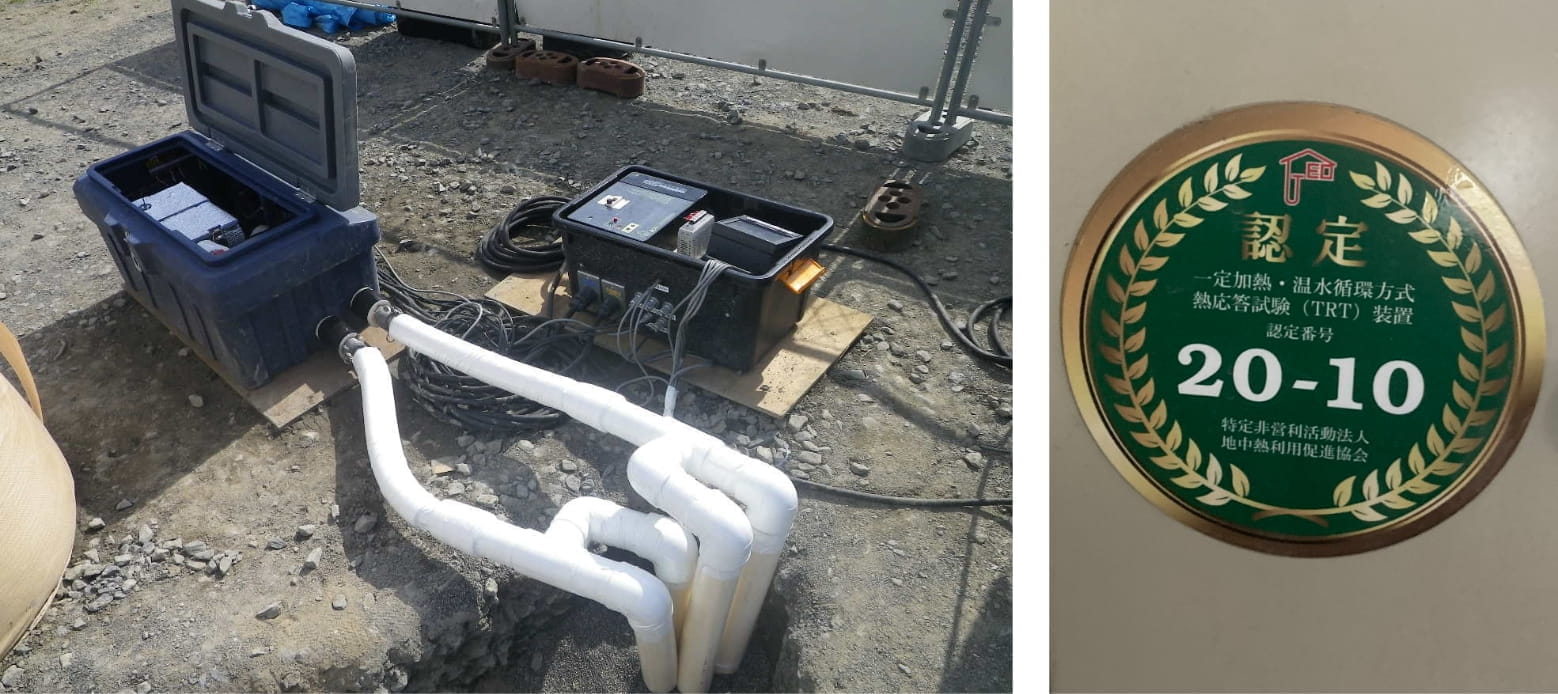
Introductions
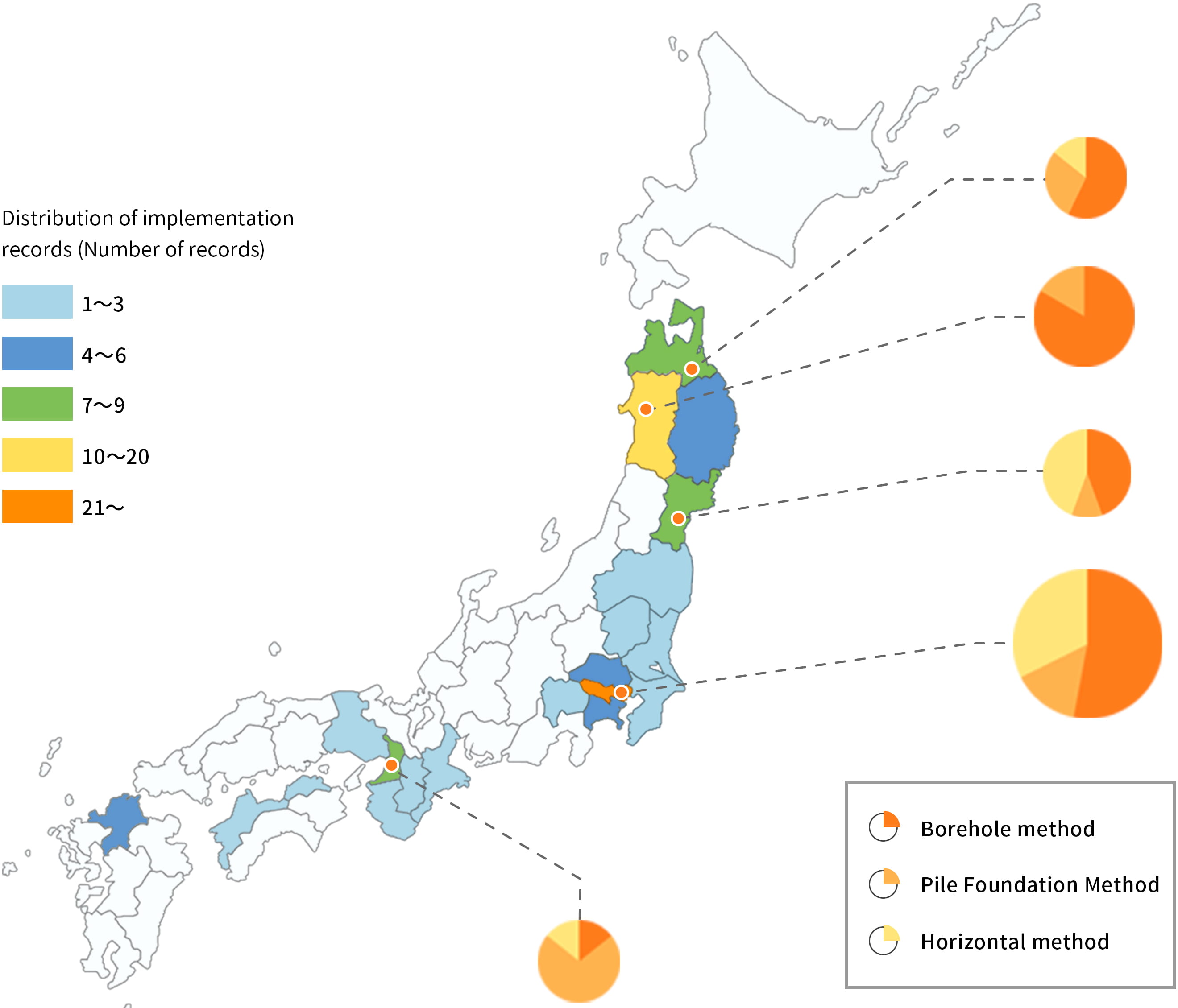
We have been promoting the introduction of these technologies across
the whole country.
So far, we have installed more than 100 systems, mainly from the Kanto to Tohoku
areas. The methods of installation have been diverse.
In recent years, the systems have become larger
scale.
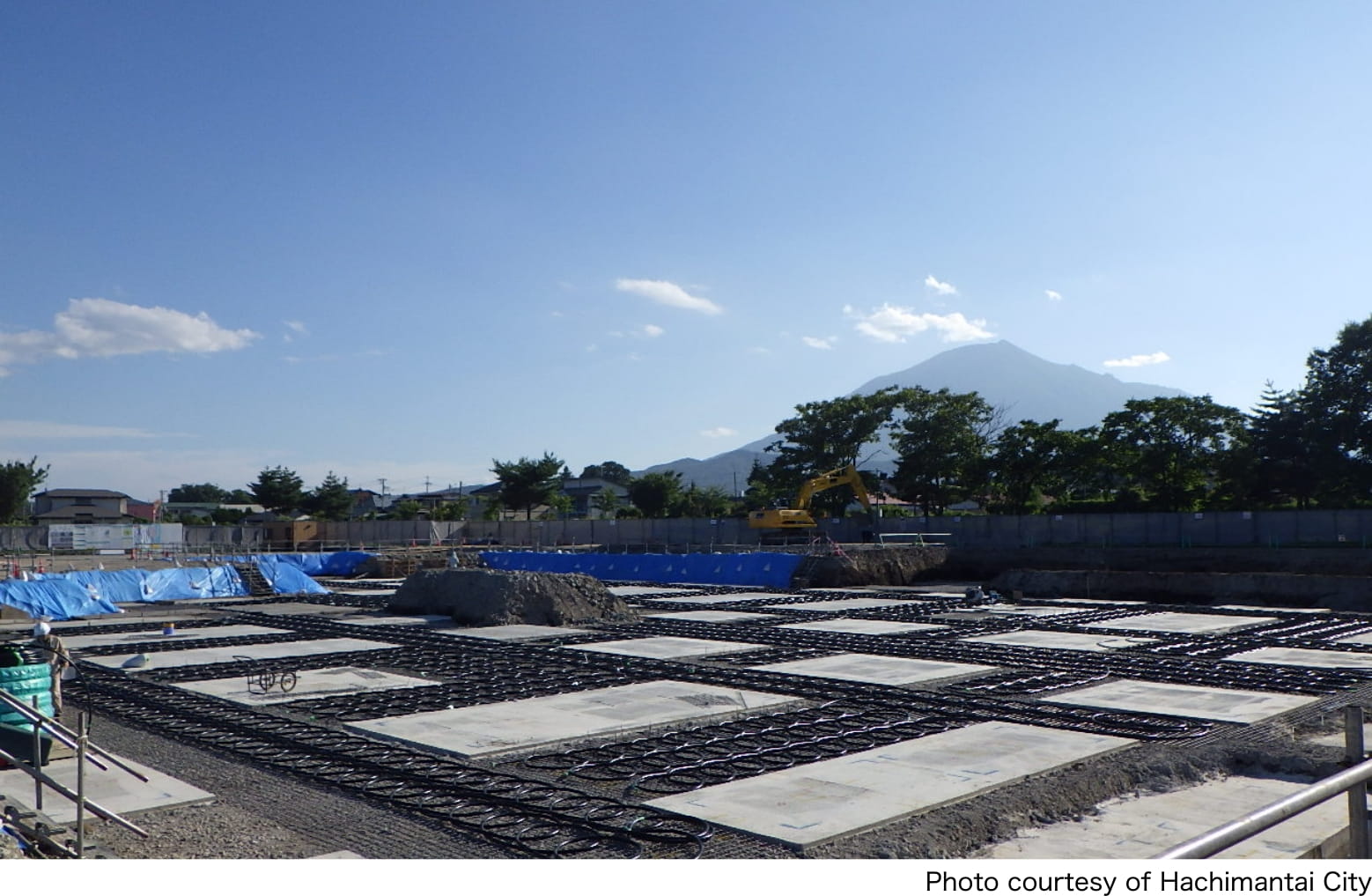
Hachimantai City Hospital (Hachimantai City, Iwate)
Ground heat exchange method: borehole method, horizontal method
One of the largest scale (approx.1,000kW) GSHP systems in Japan
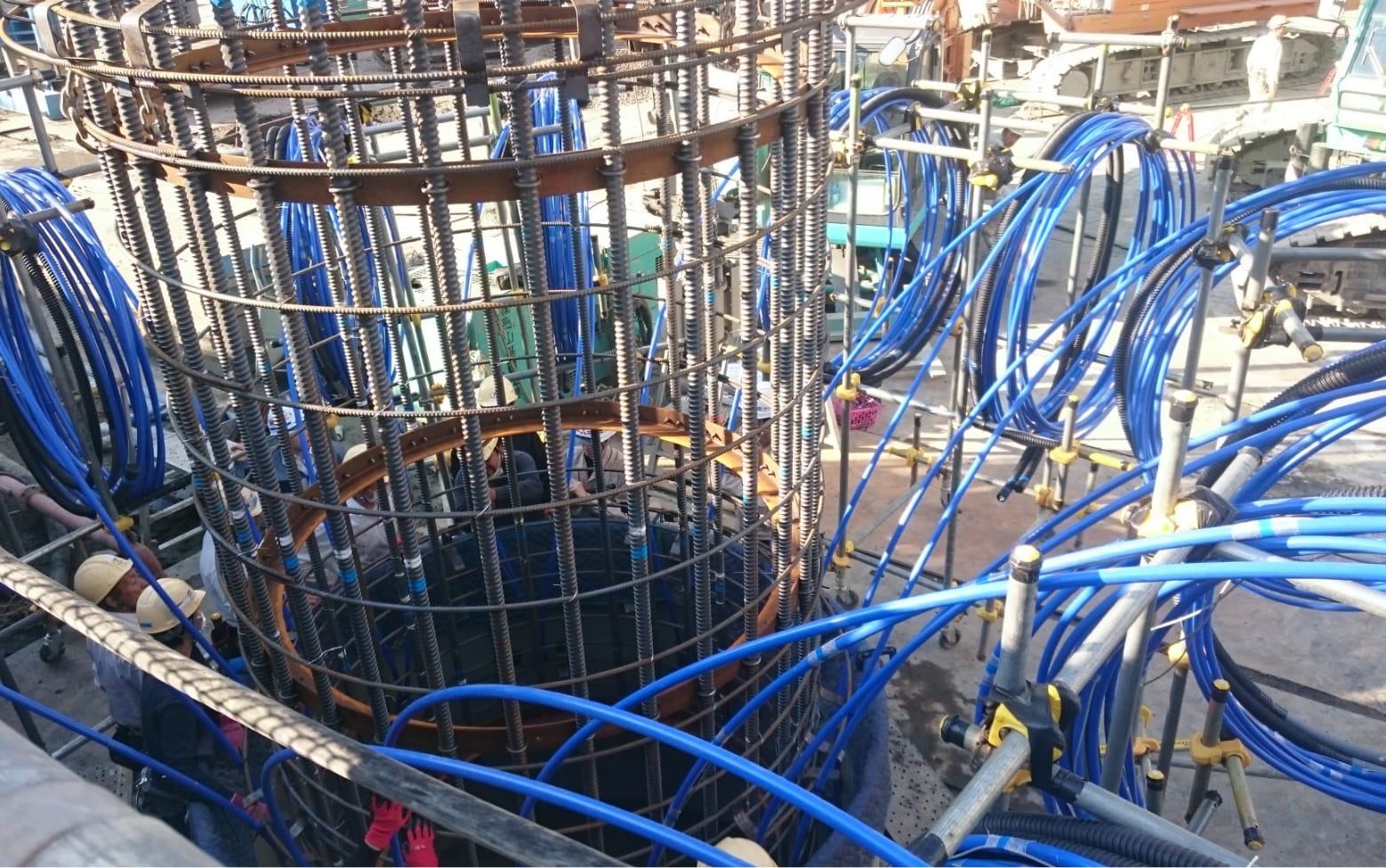
Yokohama City Hall (Yokohama City, Kanagawa)
Ground heat exchange method: pile foundation method
One of the largest scale (approx.400kW) GSHP systems in the metropolitan area of Japan
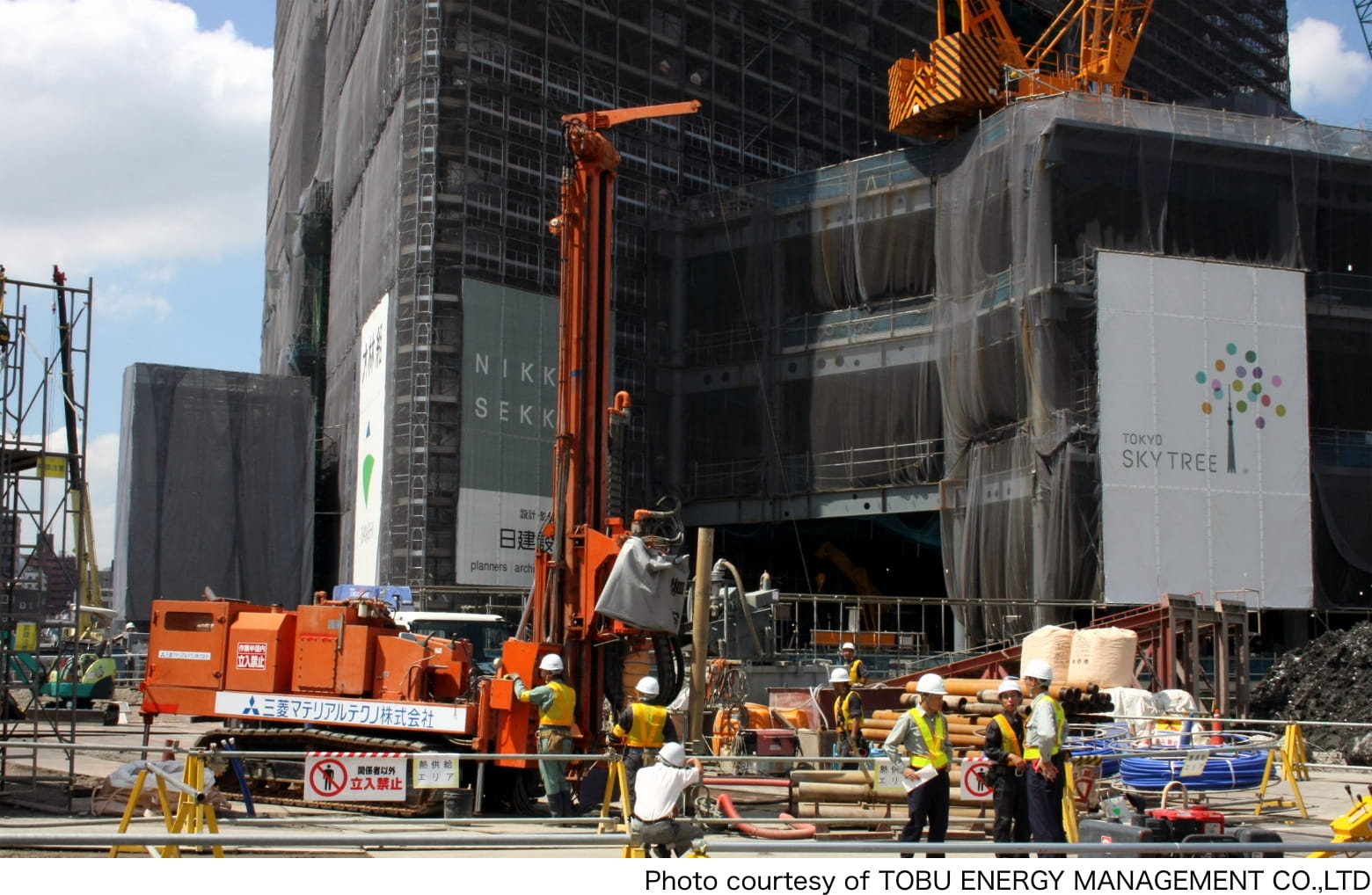
Tokyo Skytree® area (Sumida-ku, Tokyo)
Ground heat exchange method: borehole method
The first introduction to the district heating and cooling system in Japan.
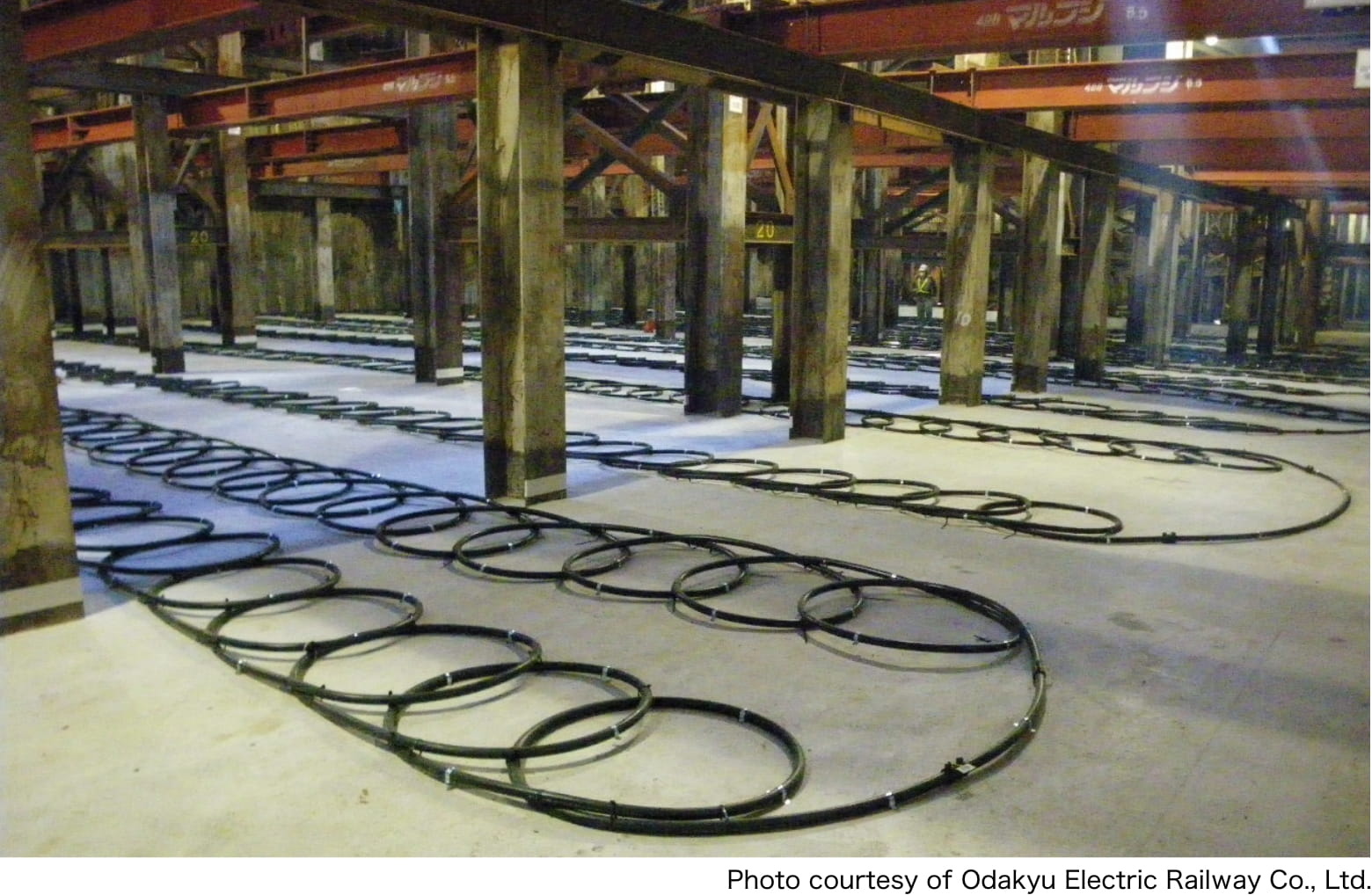
Odakyu Electric Railway Line Expansion Project (Setagaya-ku,
Tokyo)
Ground heat exchange method: horizontal method
The first introduction to the railway tunnel sector in Japan.
Implemented as one of the global warming countermeasure technology development projects led by the Ministry
of the Environment in 2010-2011.